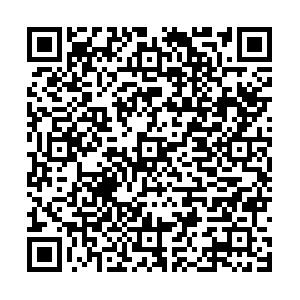Lateral Resistance of Frictional Sleeper Ballast Bed
-
摘要:
川藏铁路有砟道床断面尺寸受限,所处环境地震多发、日温差大且变化剧烈,这些情况容易导致横向阻力不足,对无缝线路稳定性和震区轨道韧性提出挑战. 为合理设计轨枕底部设有箭头型凹槽的摩擦型轨枕,并量化其提升无缝线路稳定性与韧性,采用道床横向阻力试验,测量摩擦型轨枕对道床横向阻力增幅情况;合理设计并优化了轨枕底部凹槽,制作了3种不同箭头型凹槽,除去凹槽排列方式不同外,箭头型凹槽面积、尺寸完全一致;并且验证砟肩宽度减小情况下摩擦型轨枕提供的横向阻力是否可以满足川藏铁路运维要求. 结果表明:各型摩擦型轨枕均可增大道床横向阻力,可最少提升横向阻力7%,最高提升21%;单向箭头型双向阻力存在较大阻力值差异,相比于普通轨枕顺向可增大7%,逆向可增大24%,因此在曲线地段铺设时候,应严格注意铺设方向;砟肩宽度由50 cm降低到30 cm,采用单向箭头型轨枕逆向仍然可达到Ⅲ型轨枕砟肩宽度50 cm横向阻力值.
Abstract:The Sichuan−Tibet railway is built under some difficult situations, including limited ballast bed profile, frequent earthquakes and large diurnal temperature variation. These difficulties cause insufficient lateral resistance of ballasted track, which is an urgent problem for the stability and resilience of the continuously welded rail (CWR). Aiming to improve and quantify the stability and resilience of CWR, the lateral resistance of frictional sleepers (designed as that normal sleeper with arrowhead shape groove) is evaluated with the single sleeper push test (SSPT). By performing SSPT, the increment of lateral resistance of ballast bed with frictional sleepers is measured. Shapes of sleeper grooves are properly designed and optimized (three groove shapes with the same size and volume but different arrowhead directions). Whether frictional sleeper applied to ballast bed (reduced ballast shoulder width) will provide enough lateral resistance for the ballast bed at Sichuan−Tibet railway line. Results show that frictional sleepers can increase the lateral resistance by minimum 7% and maximum 21%. Arrowhead directions significantly influence the lateral resistance, which is increased by 7% (same pushing direction) and 24% (opposite pushing direction), compared to normal sleepers. Therefore, strict attention should be paid to the laying direction when laying in curved sections of ballasted track. After reducing the ballast shoulder width from 50 cm to 30 cm, using the frictional sleeper (single arrowhead direction pushed in reversed direction) can still provide enough lateral resistance, which is the same value as a mono-block Type Ⅲ sleeper with 50 cm shoulder width.
-
Key words:
- Sichuan−Tibet railway /
- lateral resistance /
- frictional sleeper /
- resilience /
- single sleeper push test
-
川藏铁路有砟轨道建设过程中会遇到长大坡道、高烈度、大温差、半径小、断面尺寸受限等挑战,这对无缝线路稳定性和韧性提出了更高要求. 川藏铁路无缝线路稳定性和韧性问题仍然是一个值得关注的问题,更值得关注的是,受场地条件限制川藏铁路无法通过增加道床断面尺寸来增强道床稳定性. 川藏铁路大部分地处地震带区域,且因地形条件养护维修困难,同时面临地震高发、昼夜温差较大等问题. 昼夜温差大增大了胀轨跑道的可能,因胀轨跑道主要由钢轨热胀横向力超过道床横向阻力引起. 因此,提高道床横向阻力且留有一定的横向阻力冗余可以更好地提高轨道可靠性和安全性.
国内外很多学者针对提高道床稳定性和韧性,尤其是横向稳定性开展了诸多研究[1]. 道床韧性指道床对于自然灾害或不可抗力因素的抵抗和恢复能力,具体反映到无缝线路稳定性韧性,指地震、强降雨、大温差下无缝线路安全冗余与恢复.
传统提高无缝线路稳定性,尤其是道床稳定性措施大致分为道床断面及土工材料改良、密实道床和优化级配、轨枕结构优化[2]. Powrie等[3]研究表明:较大的断面尺寸可以提供更高的道床横向阻力,最终达到极限值便无法继续增大. 新型土工材料包括聚氨酯道砟胶、土工格栅、土工格室、废旧橡胶及轨枕垫[4-6]. 研究表明采用新型土工材料可以很大程度上改善无缝线路轨道稳定性[7]:Esveld等[8-9]提出采用土工格栅或土工格室可以增加道床横向阻力42%,并且可以减少122%的道床沉降;Jing等[2]研究显示,使用聚氨酯道砟胶喷涂在砟肩可以增加31%道床横向阻力;轨枕垫和废旧橡胶可以小幅度增加道床横向阻力值[2].
密实道床和优化级配也是针对道床本身的一种优化设计. 例如,增强枕心饱满度和密实度可以增加道床横向阻力约13%[2]. 新型轨枕包括Y型轨枕、梯形轨枕、翼型轨枕、钢轨枕、钢棒插入式轨枕及摩擦型轨枕[10]. 研究表明:使用翼型轨枕可以增加50%道床横向阻力;使用摩擦型轨枕在70%左右;使用钢棒插入式轨枕可以增加200%道床横向阻力[10-11].
诸多方法中,摩擦型轨枕效果较好,并且有着很多优点[12]:首先,道床横向阻力中,枕底提供阻力占较大比例,无列车荷载超过30%,有荷载情况下超过50%[13],增强枕底摩擦可有效增加道床横向阻力;其次,摩擦型轨枕生产、安装较为方便,并且造价低廉,与普通轨枕相差较小;最后,摩擦型轨枕对捣固、动力稳定、清筛、整形等养护维修影响较小.
针对摩擦型轨枕研究不仅可以提高川藏铁路韧性,也可以用于其他既有线特殊区域改造,如昼夜温差较大、地震频繁、重载铁路以及小半径曲线等. 然而,针对摩擦型轨枕试验研究仍不充分,尤其是枕底纹理形式增强效果与影响规律. 因此,本文研发箭头型纹理摩擦型轨枕,该箭头型摩擦轨枕具有相同的箭头尺寸、面积、深度,仅仅在箭头布置方式和方向上不同,目的是研究并确定合理设计方案及其应用条件. 提出了一种新型增加道床稳定性的方式,适用于诸多复杂条件下的有砟道床(川藏铁路),为创新轨枕设计规范提供试验支撑.
1. 材料及方法
1.1 材料
道床横向阻力试验是推动单根轨枕并得出其位移-力曲线的过程. 试验开展在铺设的试验线路上,该线路按照高速铁路有砟道床标准建造[14],经评估可用于道床横向阻力试验. 试验线铺设Ⅲ型混凝土轨枕,轨枕之间距离约为600 mm,最大道床顶面宽度3 600 mm,最大砟肩宽度为500 mm,最大边坡坡度1∶1.75,道床厚度约为350 mm. 试验线道砟材质为玄武岩,道砟粒径级配曲线如图1所示. 道砟其他各项指标满足规范要求,确定为一级道砟[14].
在常用Ⅲ型轨枕模具底部放置箭头型木块设计制作了3种不同型号摩擦型轨枕:单向箭头摩擦型轨枕、箭头内括摩擦型轨枕、箭头外括摩擦型轨枕,如图2所示. 同时,箭头布置位置及箭头尺寸参数也在图中进行了解释说明.
摩擦型轨枕底部纹理设计目前处于初级阶段,并无相关规范可供参考. 在一些论文中可以发现,摩擦型轨枕横向阻力和底部纹理形状、尺寸有着较大关系[15].
本文中纹理设计理念来源于汽车轮胎花纹,通过观察发现,大部分汽车轮胎花纹为波浪型,即诸多箭头形状连接在一起. 轨枕底面纹理深度为20 mm,并且为内嵌纹理,该设计主要考虑混凝土轨枕配筋位置,防止配筋下部混凝土受损脱落影响轨枕使用寿命. 同时,考虑道砟尺寸在20~60 mm之间,多数集中于40 mm左右,因此箭头凹槽宽度50 mm可以让道砟嵌入在轨枕纹理中,极大增加轨枕和道砟之前的接触面积,从而增大横向阻力.
该种箭头型枕底纹理有以下两方面创新性:1) 箭头型本身就为新型轨枕底面纹理设计,可以最大程度上增加道砟和轨枕间接触面积;2) 采用内部凹陷而并非突起型纹理,可以延长使用周期,并且尽量减少了对原来普通轨枕的形状改变.
3种摩擦型轨枕设计分别针对不同应用轨道位置:单向箭头摩擦型轨枕可以应用于小半径曲线线路,单向增强道床横向阻力;箭头内括、外括型轨枕应用于普通线路.
1.2 试验工况
为确定不同摩擦型轨枕横向阻力的增幅情况,即在减小砟肩宽度情况下,摩擦型轨枕是否可以提供足够横向阻力. 因此,试验的两个变量为轨枕类型及砟肩宽度,试验工况如表1所示. 其中每组工况进行3次试验,取3次试验平均值作为每组工况最终结果.
表 1 试验工况Table 1. Test conditions工况编号 轨枕类型 砟肩宽度/cm 边坡坡度 枕心 A1 Ⅲ型 50 1∶1.75 有 A2 单向箭头(顺、
逆向推动轨枕)50 1∶1.75 有 A3 内括箭头 50 1∶1.75 有 A4 外括箭头 50 1∶1.75 有 B1 单向箭头 30 1∶1.75 有 C1 Ⅲ型 0 0 无 C2 内括箭头 0 0 无 C3 外括箭头 0 0 无 C4 单向箭头(顺、
逆向推动轨枕)0 0 无 为了精确测试摩擦型轨枕较一般轨枕增加横向阻力的大小,试验中测试了不同道床位置对横向阻力的分担情况. Kasraei等[12]提出道床横向阻力由轨枕底部道砟(45% ~50%)、枕心道砟(15%~20%)、砟肩道砟(35%~40%)分担. 由此可见枕底提供约一半的道床横向阻力. 因此,试验工况包括了单根轨枕在缺少枕心和砟肩道砟情况下,Ⅲ型轨枕和摩擦型轨枕的横向阻力情况,也可以精准确定横向阻力增大是由于增强了枕底道砟-轨枕相互作用.
工况A2和C4中,采用轨枕类型为单向箭头轨枕,两个方向推动单向箭头轨枕,确定推动方向对单项箭头轨枕道床横向阻力增幅情况的影响.
1.3 道床横向阻力试验
道床横向阻力试验在轨道试验场完成,在已经铺设好的道床上放置摩擦型轨枕,在轨枕一端用液压千斤顶提供推力,放置压力传感器于千斤顶和轨枕之间测得推力,并采用数据采集仪IMC传输数据到电脑,如图3所示. 位移计放置于轨枕另外一侧,测得轨枕实时位移,最终得到轨枕推力(道床横向阻力)和相应轨枕位移曲线.
图3中横向阻力试验仪器及其参数为:量程10 t行程15 cm的液压千斤顶、千斤顶反力支架、土力盒压力传感器、量程30 mm精度0.01 mm千分表、INV1861A型应变调理仪、INV3018A型IMC数据采集仪.
步骤1 3根不同类型摩擦型轨枕替换既有线路上的轨枕,然后统一对试验区域道砟进行捣固、震动夯实.
步骤2 每根轨枕预先采用两根轨枕进行预压,静置一晚之后在试验前将预压轨枕卸除. 通过这种方式来增强道砟-轨枕间接触,更接近真实线路轨枕-道砟接触情况.
步骤3 横向阻力试验推力分3次加载,每次加载到轨枕位移基本稳定时进行下次加载. 加载到轨枕位移增加而推力基本保持不变时,停止加载. 连接各散点绘制成连续曲线,取轨枕位移为2 mm时的轨枕推力为道床横向阻力.
2. 结果与分析
2.1 轨枕类型
不同类型轨枕道床横向阻力如图4所示,图中为工况A1~A4的阻力值结果. 图中标注单向箭头逆推指:试验过程中试验对象为单向箭头轨枕,并且其推动方向为逆着箭头方向,顺推即顺着箭头方向推轨枕. 图中试验工况中砟肩宽度均为50 cm.
有砟道床为散体级配碎石结构,误差主要来源于道床整体的孔隙率变化,即道床整体密实度不同尤其是砟肩部分密实度差异对误差范围影响较大. 试验误差还来源于轨枕底部和道床的接触情况,每次试验接触位置和数目均有一定变化.
针对该两种可能产生误差的影响因素,采用了3种措施减小误差:1) 3组试验取平均值;2) 对砟肩道砟每次采用相同夯实措施;3) 轨枕上施加相同重物增加枕底道床接触. 采用如上方式后,每组工况下横向阻力最大值之间相差小于4.5%,即试验误差范围小于4.5%.
图4中可知:横向阻力在开始1 mm位移内处于急速增长阶段,在1 mm和2 mm之间达到稳定,并且阻力值接近于最大值,继续推动轨枕阻力值增加幅度非常小.
箭头型摩擦轨枕可以提供高于普通Ⅲ型轨枕的横向阻力值,高出7%~21%,进而增强道床稳定性;箭头内括轨枕和箭头外括轨枕横向阻力值在各个位移阶段接近,峰值也接近,约为10 kN,内括箭头轨枕和外括箭头轨枕两种设计取其中一种即可.
因为现场试验和实验室试验有较大区别,现场道床密实度要远高于实验室,因此实验室试验阻力值通常无法达到现场验收标准,规范要求:运营速度200~250 km/h的铁路单根轨枕横向阻力峰值不小于10 kN;运营速度250~300 km/h的铁路单根轨枕横向阻力峰值不小于12 kN.
现场横向阻力值远高于实验室测量值,是因为在道床捣固过后还有动力稳定过程,且一般现场测量时轨道已经有了很大运量. 然而针对本文采用的实验室试验,对比普通轨枕和摩擦型轨枕横向阻力增长百分比是具有实际意义的. 因为轨枕自重是影响轨枕底部提供横向阻力的主要因素,而且在试验过程中道床密实度基本保持不变. 因此,本文中提出的研究方法(1.3小节),即比较枕底阻力所占百分比及枕底横向阻力对川藏铁路建设实际应用有一定指导意义.
2.2 方向影响
图4中还展示了单向箭头摩擦型轨枕在不同推动方向下与普通Ⅲ型轨枕横向阻力对比情况.
由图4可以看出:1) 两个方向推动单向箭头摩擦型轨枕时阻力值差异约为20%. 2) 单向箭头轨枕顺推各个阶段阻力和普通Ⅲ型轨枕相仿,最大值高于普通轨枕7%,然而逆着箭头方向推动轨枕可以增加约24%的横向阻力,即当逆推时,轨枕底纹和嵌入道砟形成更强互锁,减少相对滑移,从而提供更高阻力值. 因此,单向箭头轨枕铺设于曲线段顺向时可以保证充足的横向阻力,逆向也可以提升横向阻力,充分证明了单向箭头轨枕有能力应用于曲线段.
2.3 枕底道床阻力分担比例
3种不同箭头型摩擦轨枕和Ⅲ型轨枕枕底横向阻力所占百分比如图5所示. 由图中可以看出:除去单向箭头顺推情况,其它摩擦型轨枕枕底横向阻力所占比例达43.5%~47.7%,高于普通Ⅲ型轨枕(37.3%);单向箭头轨枕在逆推情况下,枕底可以分担接近一半的道床阻力,这对桥上有砟道床等需要减小道床断面尺寸的特殊地段有着重要的意义.
摩擦型轨枕如果实际应用于线路中会有更高的横向阻力. 因为在捣固和动力稳定后,轨枕底部和道床有了更密实的接触,嵌入轨枕底部纹理中的道砟更多,枕底和道砟之间的相互作用力更大.
2.4 砟肩宽度
单向箭头摩擦型轨枕逆推可以获得最大横向阻力值,因此研究砟肩宽度降低时其横向阻力是否满足横向阻力验收值,并且与普通Ⅲ型轨枕进行对比,如图6所示. 由图中可以看出:降低砟肩宽度后横向阻力值在轨枕位移2 mm处降低约16%;与普通轨枕砟肩宽度50 cm对比,摩擦型轨枕在砟肩宽度30 cm的情况下阻力值在1.2 mm和5.0 mm处和Ⅲ型轨枕接近. 由此可以判断单向箭头摩擦型轨枕可以应用于砟肩等道床断面尺寸减小的特殊地段情况.
3. 结 论
本文针对川藏铁路有砟轨道稳定性和韧性进行研究,通过研发、设计、制造箭头型摩擦型轨枕,采用道床横向阻力试验,研究、比较、确定摩擦型轨枕增强方案,以及分担、影响规律,主要结论如下:
1) 箭头型摩擦型轨枕与普通Ⅲ型轨枕相比,道床阻力增幅分别为最低7%和最高24%,可提高无缝线路稳定性和韧性.
2) 采用单向箭头轨枕方案逆推条件下,砟肩宽度为30 cm时,可以达到普通Ⅲ型轨枕砟肩宽度50 cm道床阻力值.
3) 对于单向箭头型摩擦型轨枕在逆推条件下横向阻力值更高,因此在曲线地段应用时,应采用箭头方向指向内轨.
-
表 1 试验工况
Table 1. Test conditions
工况编号 轨枕类型 砟肩宽度/cm 边坡坡度 枕心 A1 Ⅲ型 50 1∶1.75 有 A2 单向箭头(顺、
逆向推动轨枕)50 1∶1.75 有 A3 内括箭头 50 1∶1.75 有 A4 外括箭头 50 1∶1.75 有 B1 单向箭头 30 1∶1.75 有 C1 Ⅲ型 0 0 无 C2 内括箭头 0 0 无 C3 外括箭头 0 0 无 C4 单向箭头(顺、
逆向推动轨枕)0 0 无 -
[1] LIU H, XIAO J, WANG P G, et al. Experimental investigation of the characteristics of a granular ballast bed under cyclic longitudinal loading[J]. Construction and Building Materials, 2018, 163: 214-224. doi: 10.1016/j.conbuildmat.2017.12.037 [2] JING G, AELA P. Review of the lateral resistance of ballasted tracks[J]. Proceedings of the Institution of Mechanical Engineers,Part F:Journal of Rail and Rapid Transit, 2019, 234(8): 0954409719866355.1-0954409719866355.14. [3] POWRIE W, LE PEN L M. Contribution of base,crib,and shoulder ballast to the lateral sliding resistance of railway track:a geotechnical perspective[J]. Proceedings of the Institution of Mechanical Engineers,Part F:Journal of Rail and Rapid Transit, 2011, 225(2): 113-128. doi: 10.1177/0954409710397094 [4] 井国庆. 铁路有砟道床[M]. 北京: 中国铁道出版社, 2012. [5] 井国庆,贾文利,付豪,等. 高速铁路有砟道床横向阻力特性与固化技术[J]. 西南交通大学学报,2019,54(5): 1087-1092.JING Guoqing, JIA Wenli, FU Hao, et al. High-speed ballasted railway track lateral resistance characteristics and reinforcements[J]. Journal of Southwest Jiaotong University, 2019, 54(5): 1087-1092. [6] 高睿,石知政,刘洋泽鹏,等. 土工格栅对受污道砟直剪特性影响的试验研究[J]. 西南交通大学学报,2021,56(6): 1185-1191.GAO Rui, SHI Zhizheng, LIU Yangzepeng, et al. Experimental study on effect of geogrid on direct shear behavior of contaminated ballast[J]. Journal of Southwest Jiaotong University, 2021, 56(6): 1185-1191. [7] KISH A, SAMAVEDAM G. Track buckling prevention: theory, safety concepts, and applications[R]. [S.l.]: Volpe National Transportation Systems Center, 2013. [8] ESVELD C. Improved knowledge of CWR track[D]. Delft: Delft University of Technology, 1997. [9] ESMAEILI M, ZAKERI J A, BABAEI M. Laboratory and field investigation of the effect of geogrid-reinforced ballast on railway track lateral resistance[J]. Geotextiles and Geomembranes, 2017, 45(2): 23-33. doi: 10.1016/j.geotexmem.2016.11.003 [10] 付豪. 基于模型试验及 DEM 仿真的混凝土轨枕道床横向阻力研究[D]. 北京: 北京交通大学, 2019. [11] 井国庆,王新雨,周强,等. 钢棒加强式轨枕道床的纵横向阻力试验研究[J]. 西南交通大学学报,2021,56(6): 1192-1196, 1213.JING Guoqing, WANG Xinyu, ZHOU Qiang, et al. Experiments study on longitudinal and lateral resistance of steel rod reinforced sleeper[J]. Journal of Southwest Jiaotong University, 2021, 56(6): 1192-1196, 1213. [12] KASRAEI A, ZAKERI J A, ESMAEILI M, et al. A numerical investigation on the lateral resistance of frictional sleepers in ballasted railway tracks[J]. Proceedings of the Institution of Mechanical Engineers,Part F:Journal of Rail and Rapid Transit, 2014, 230(2): 440-449. [13] KISH A. On the fundamentals of track lateral resistance[R]. [S.l.]: American Railway Engineering and Maintenance of Way Association, 2011. [14] 中华人民共和国铁道部. 高速铁路有砟轨道线路维修规则(试行)[M]. 北京: 中国铁道出版社, 2013: 9-10. [15] ZAKERI, J A, MIRFATTAHI B, FAKHARI M. Lateral resistance of railway track with frictional sleepers[J]. Proceedings of the Institution of Civil Engineers-Transport, 2012, 165(2): 151-155. doi: 10.1680/tran.2012.165.2.151 期刊类型引用(3)
1. 王远航. 地锚拉杆对无缝线路稳定性的影响. 国防交通工程与技术. 2024(02): 22-26 .  百度学术
百度学术2. 张智海,肖宏,刘光鹏,王阳,迟义浩. 三枕捣固作业中捣镐夹持力对有砟道床作用效应影响研究. 铁道学报. 2024(10): 132-143 .  百度学术
百度学术3. 祁天佑. 基于离散元的小半径曲线有砟道床横向阻力特性及加强措施研究. 机械设计与制造工程. 2022(05): 99-103 .  百度学术
百度学术其他类型引用(7)
-






 下载:
下载:





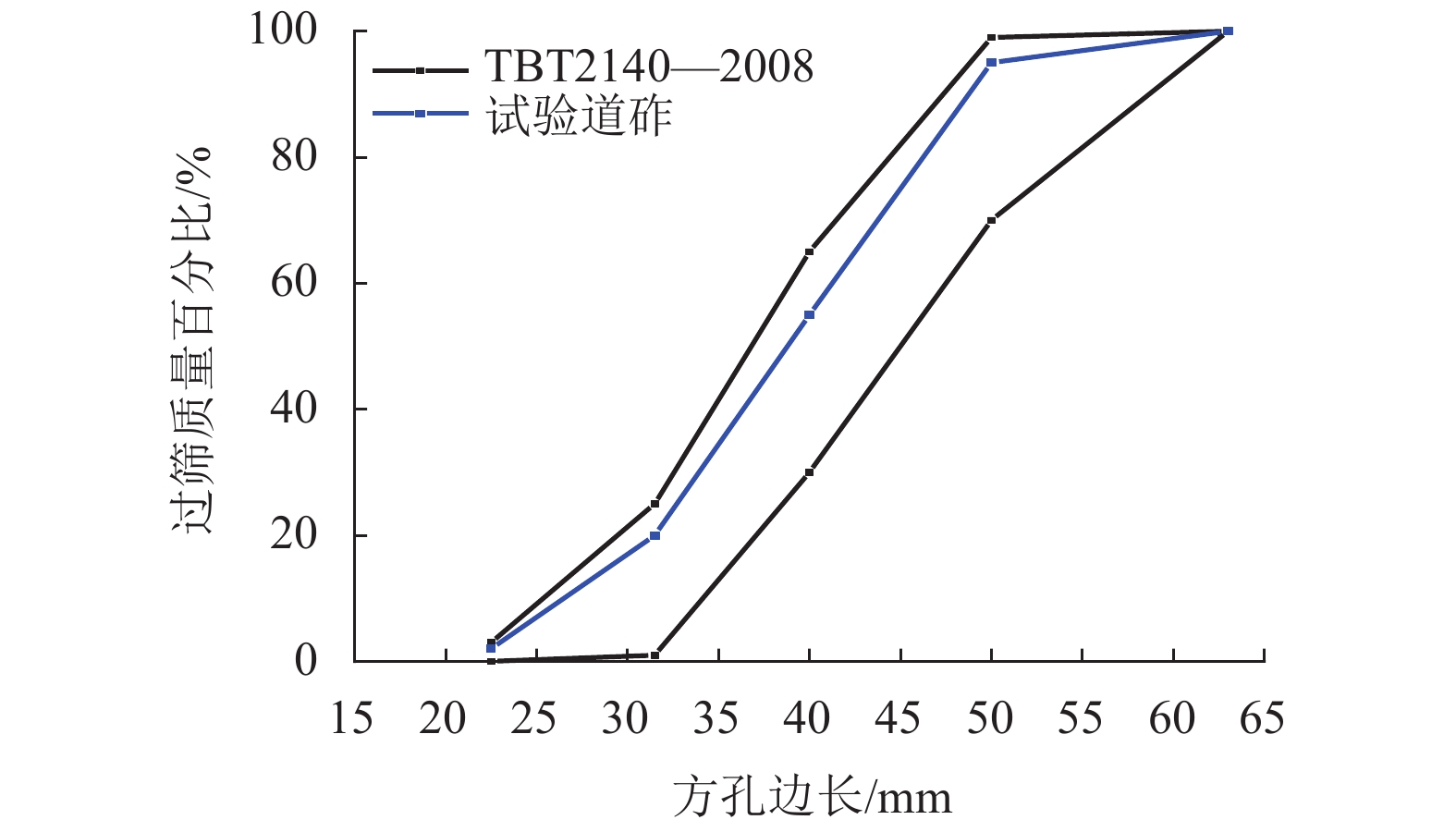
 下载:
下载:
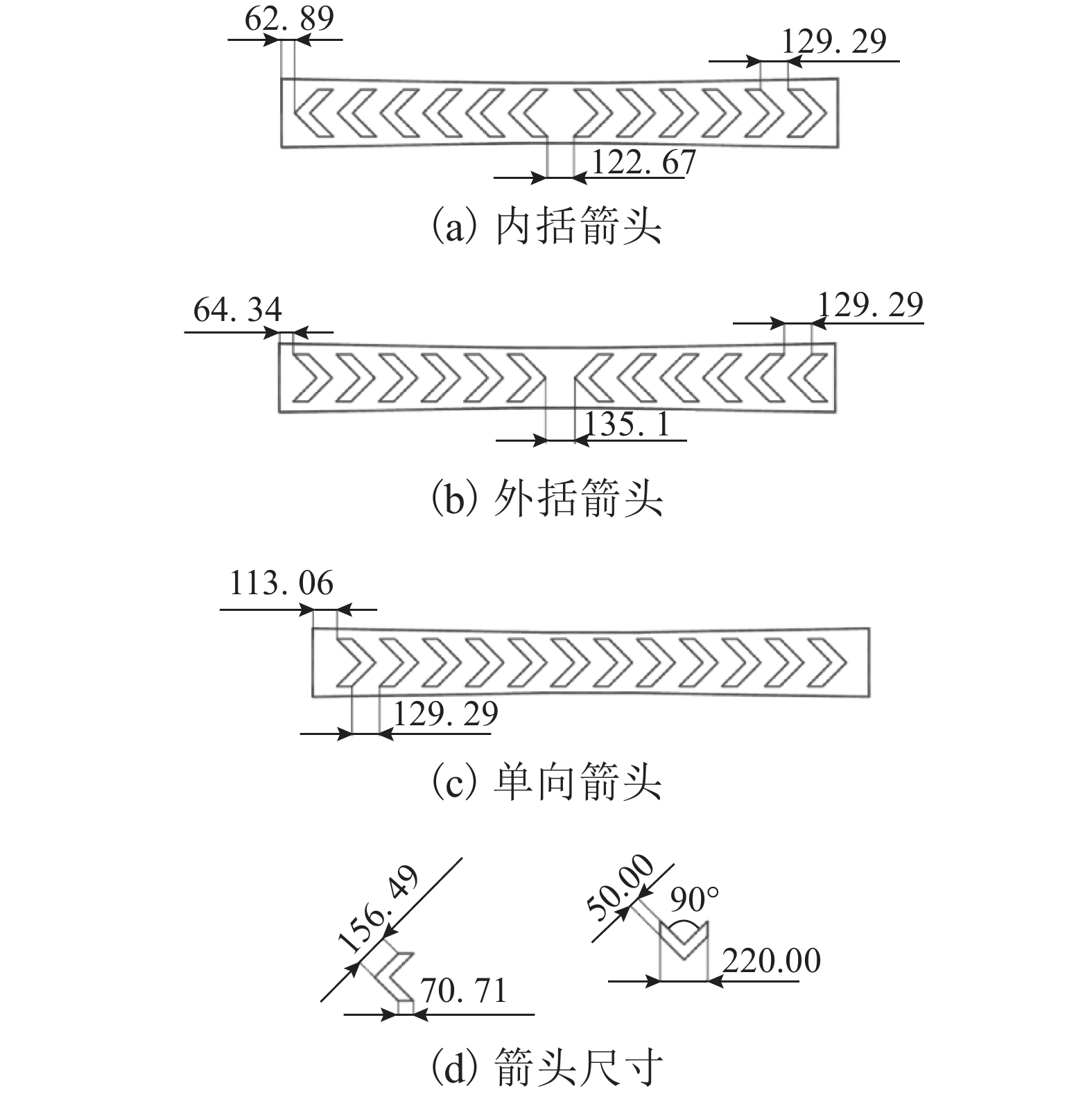
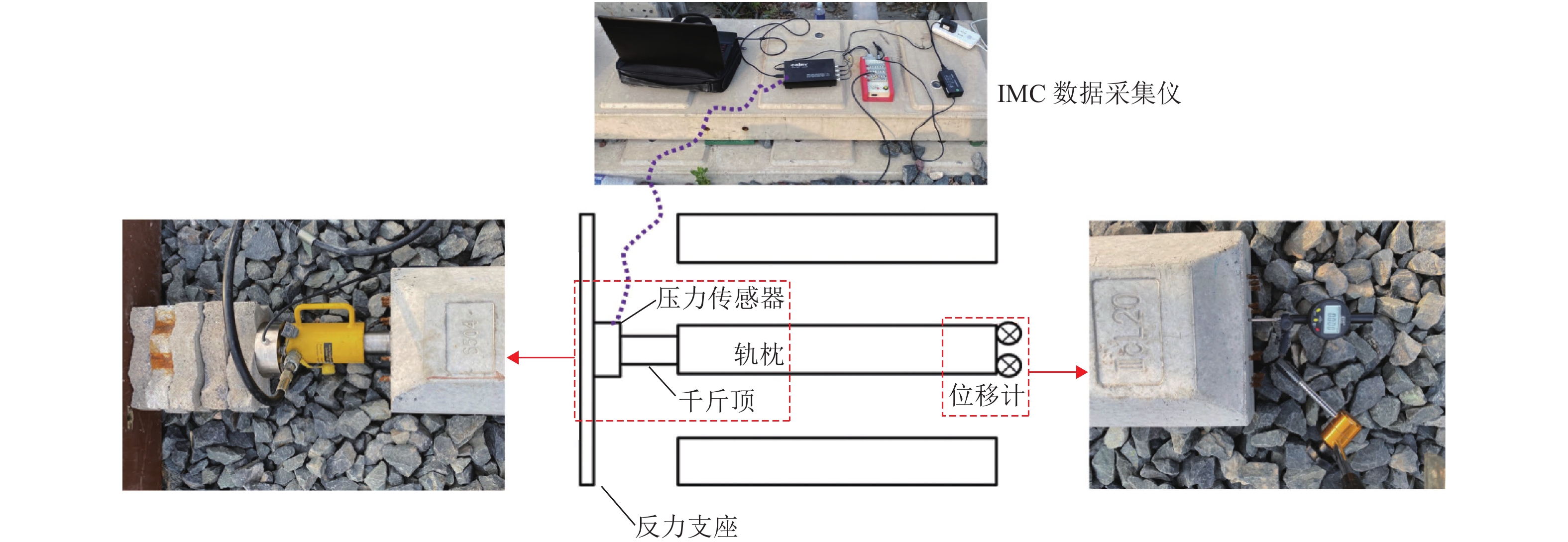
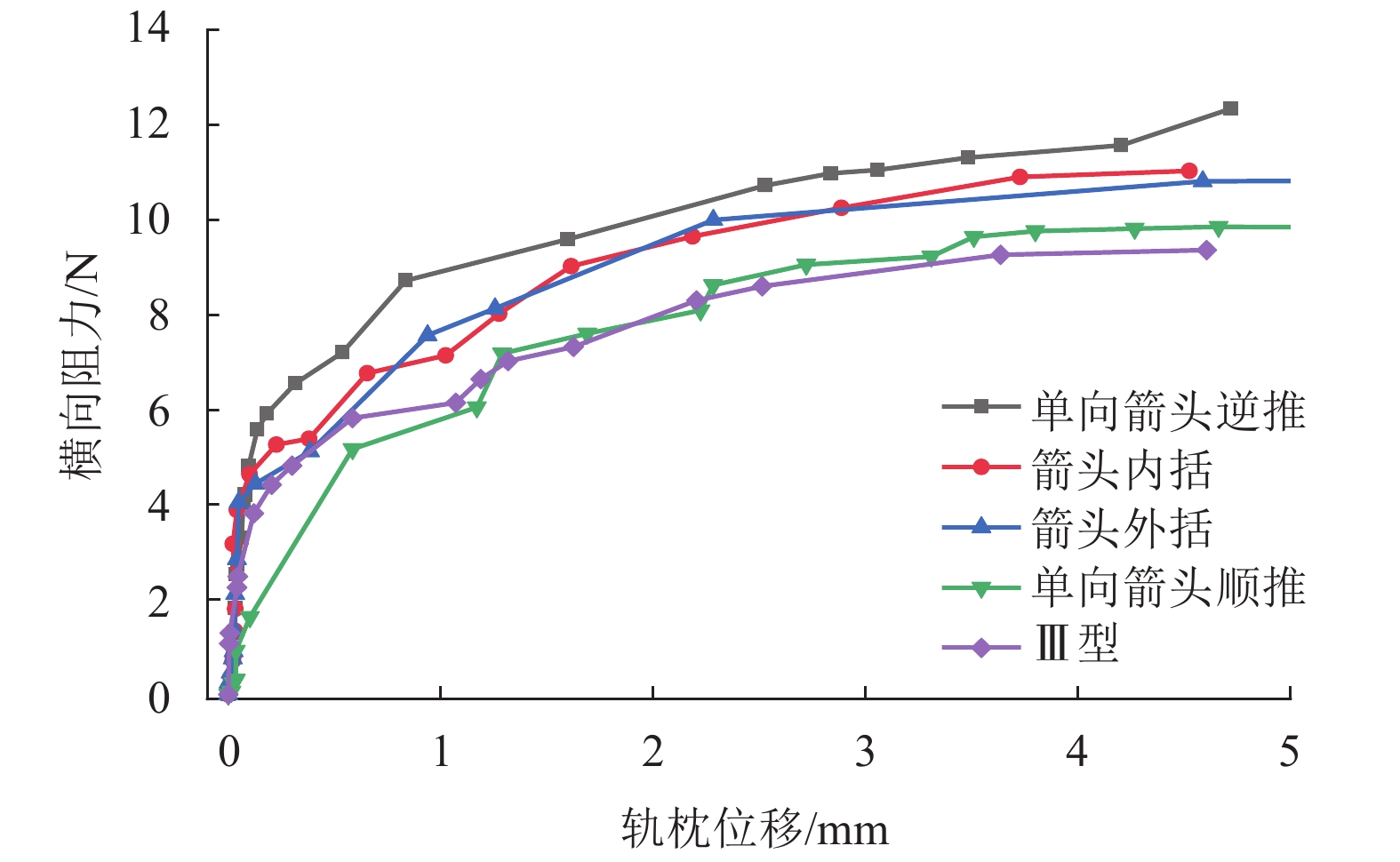
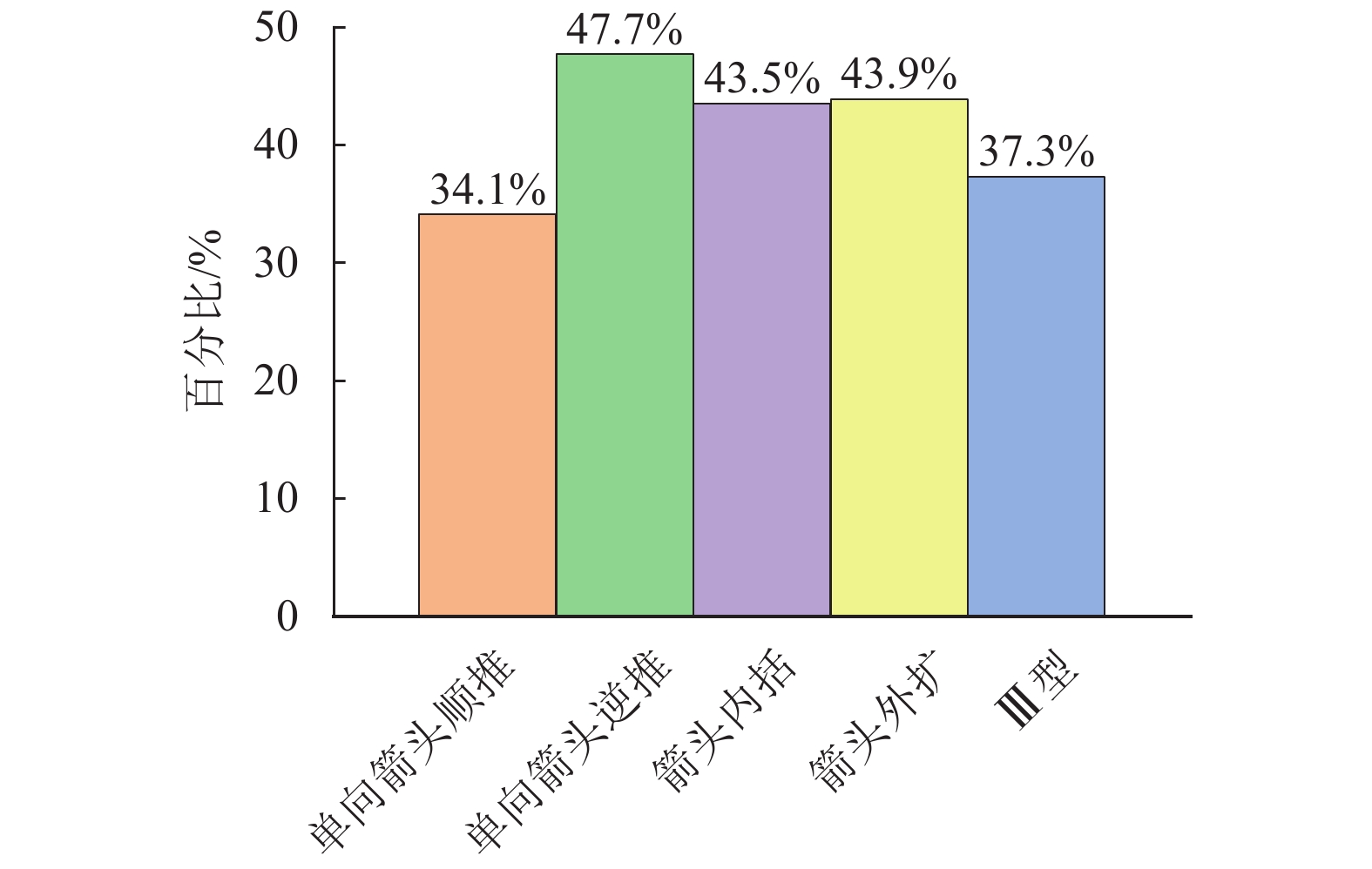
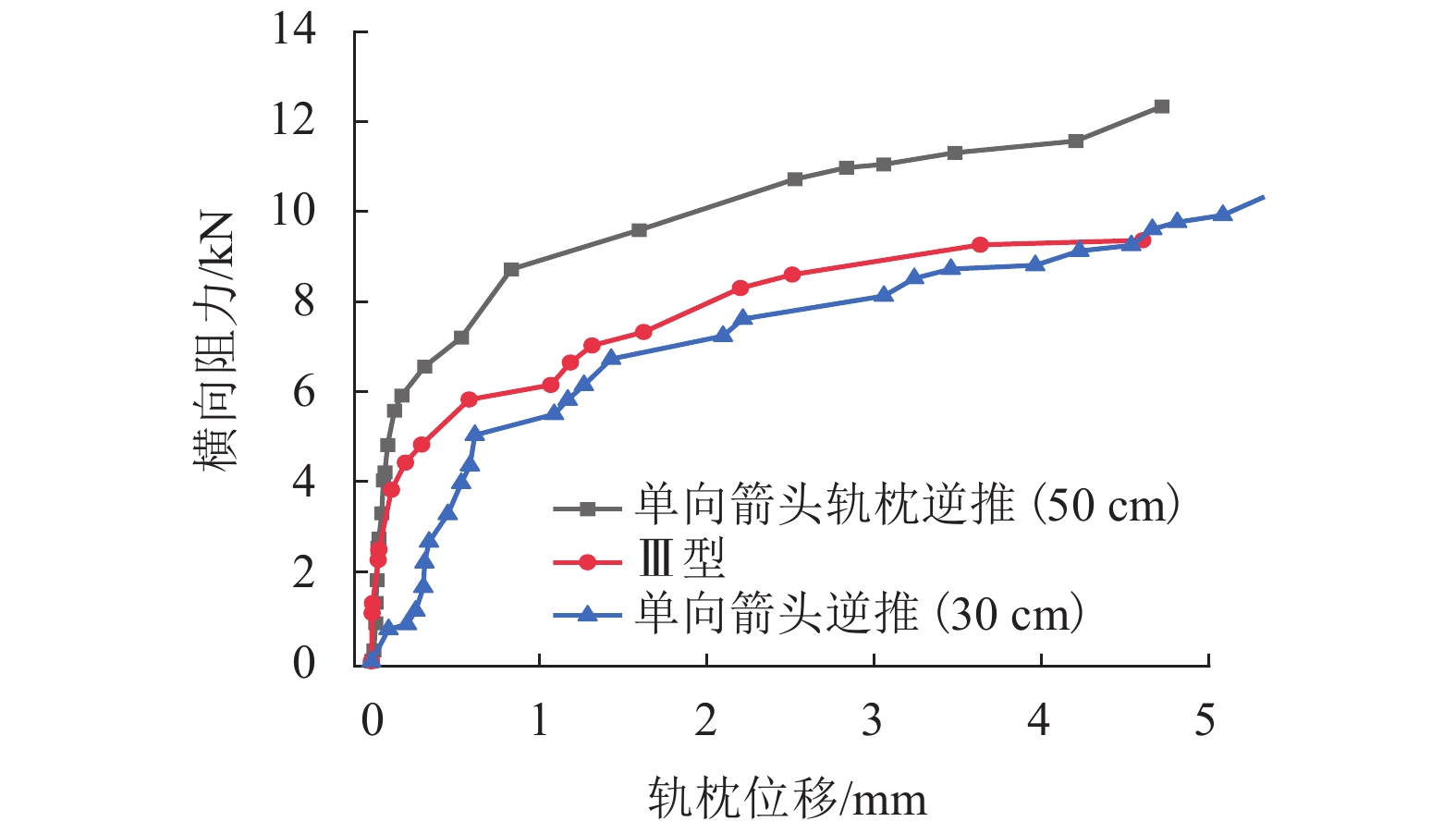
 百度学术
百度学术
